Best kitchen sink materials for hard water areas - 5 options that will make cleaning easier
Beat the hard water blues with the best kitchen sink materials and top advice for taking limescale buildup in your stride
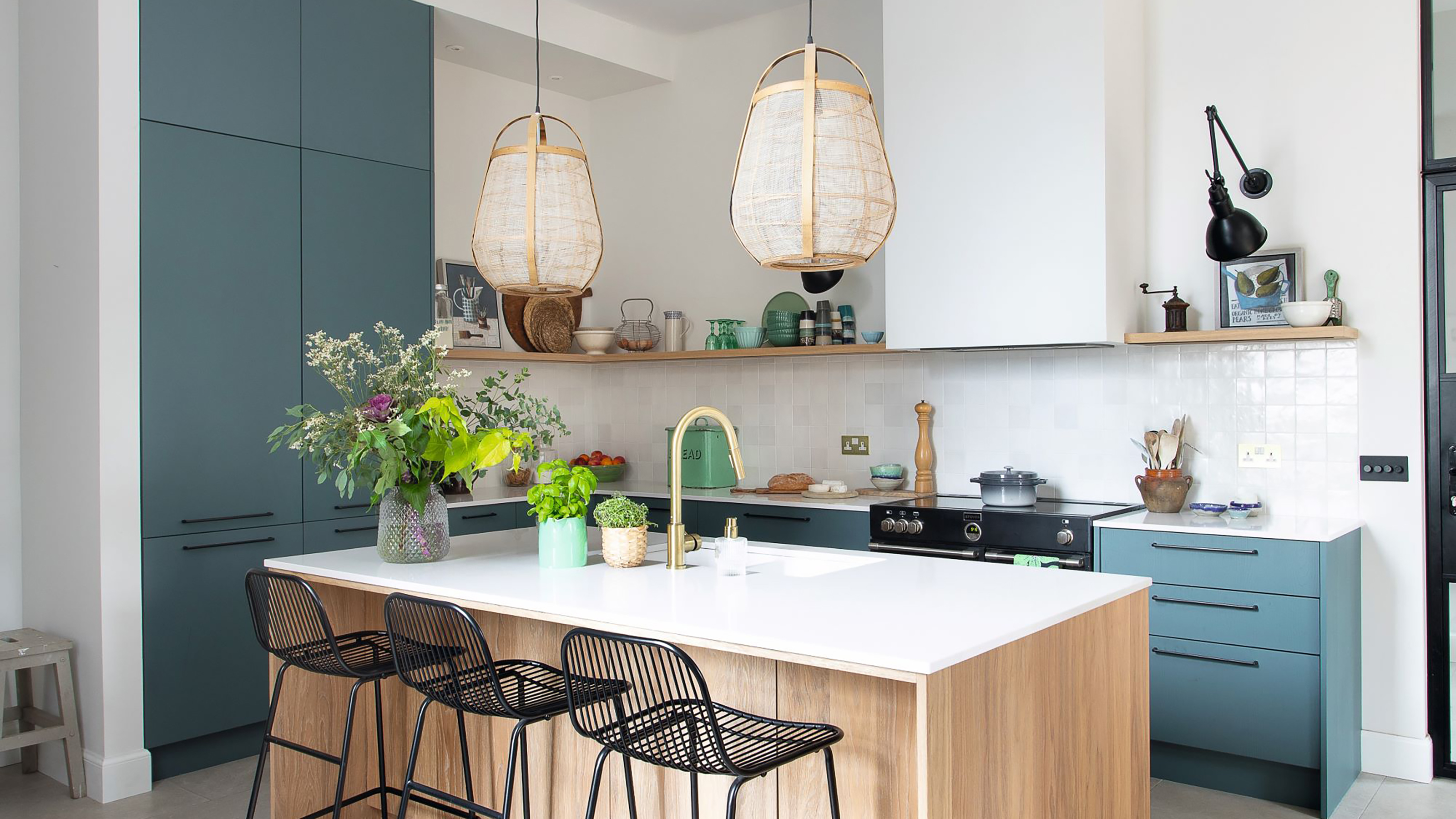

Hard water is common in about 60% of UK homes – trust us, you will soon know if your home has a hard water supply! Hard water can be a total pain in the rear, especially for the items that come into direct contact with water – like the kitchen sink. One great way to mitigate the effects of hard water is to seek out kitchen sink ideas that are less susceptible to its impact.
But first, what is hard water and why should we care? ‘Hard water contains high levels of calcium and magnesium, which are picked up as rainwater passes through rocks like limestone and chalk. These minerals cause limescale build-up in kitchen sinks and plumbing, leading to milky white deposits,’ says Gabby Gardner, UK Sinks Product Manager at Franke. Over time, limescale can be difficult to remove and may require specialist cleaning products, and a lot of effort, to get your sink sparkling clean again.
To prevent build-up, regularly drying the sink after use can help avoid the marks caused by limescale but you can also do yourself a favour by carefully considering sink materials before you buy. Here, we explore the best kitchen sink materials for hard water areas, weighing the pros and cons of each when it comes to dealing with limescale and other mineral build-ups.

Specialising in sinks, sink accessories and worktops, Gabby has more than eight years of experience in product management, and helps to develop new products and recommend range changes or upgrades that meet market needs.
1. Granite composite
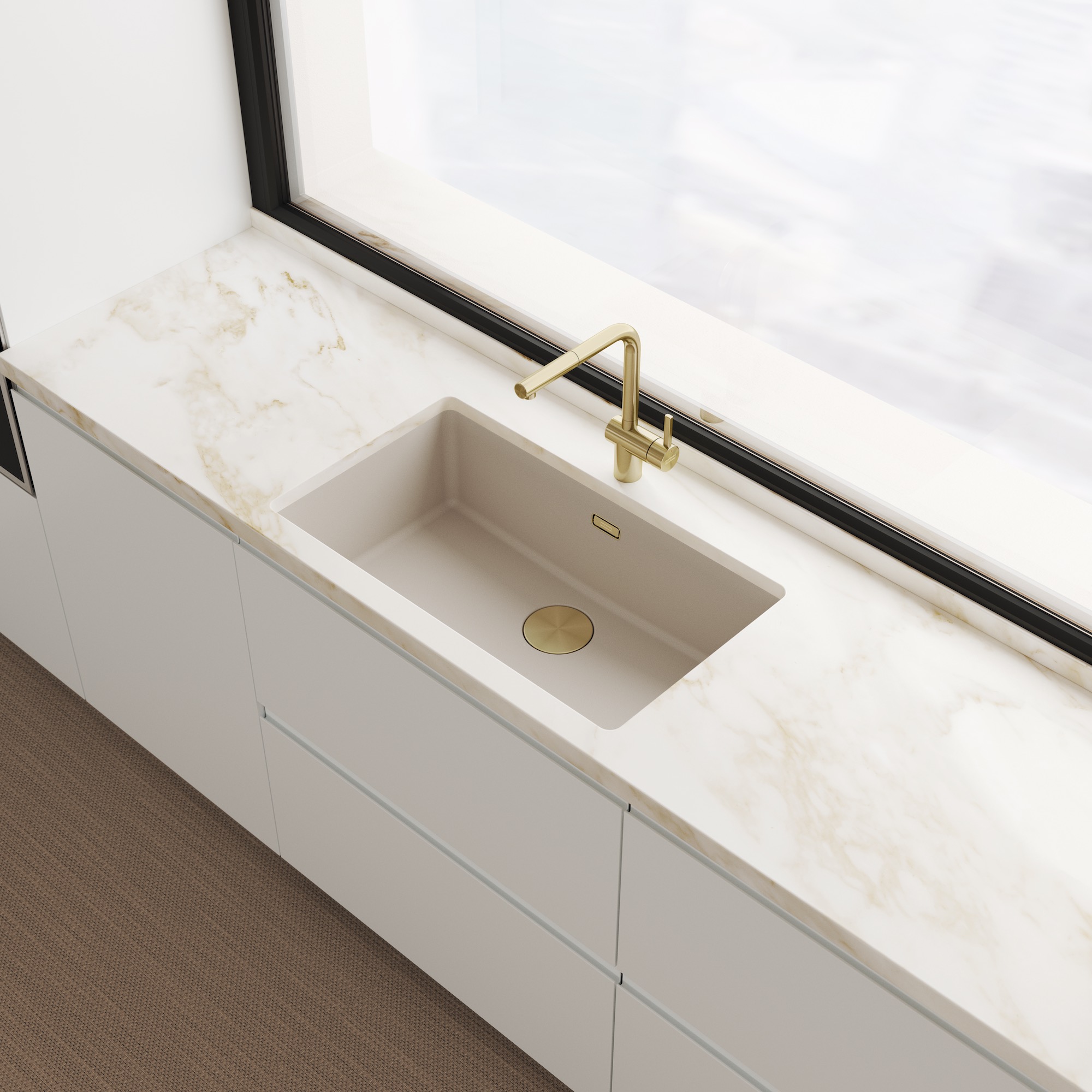
PROS Granite composite sinks are made by combining crushed granite with resin, resulting in a durable material that is resistant to chipping, scratching, and staining. Also known as solid surface or composite stone, this robust sink material is popular with those seeking more colour options and seamless shapes.
CONS ‘Like any sink material, they do require some maintenance to prevent limescale buildup,’ says Gabby Gardner from Franke. ‘Lighter colours like white, cream or beige can be more practical in hard water areas because they help camouflage the milky white limescale deposits. These are more noticeable on darker sinks such as black and grey.’
Gabby recommends removing any limescale deposits with vinegar diluted with water or a specialist coloured sink cleaner, available on Amazon.
2. Fireclay and ceramic
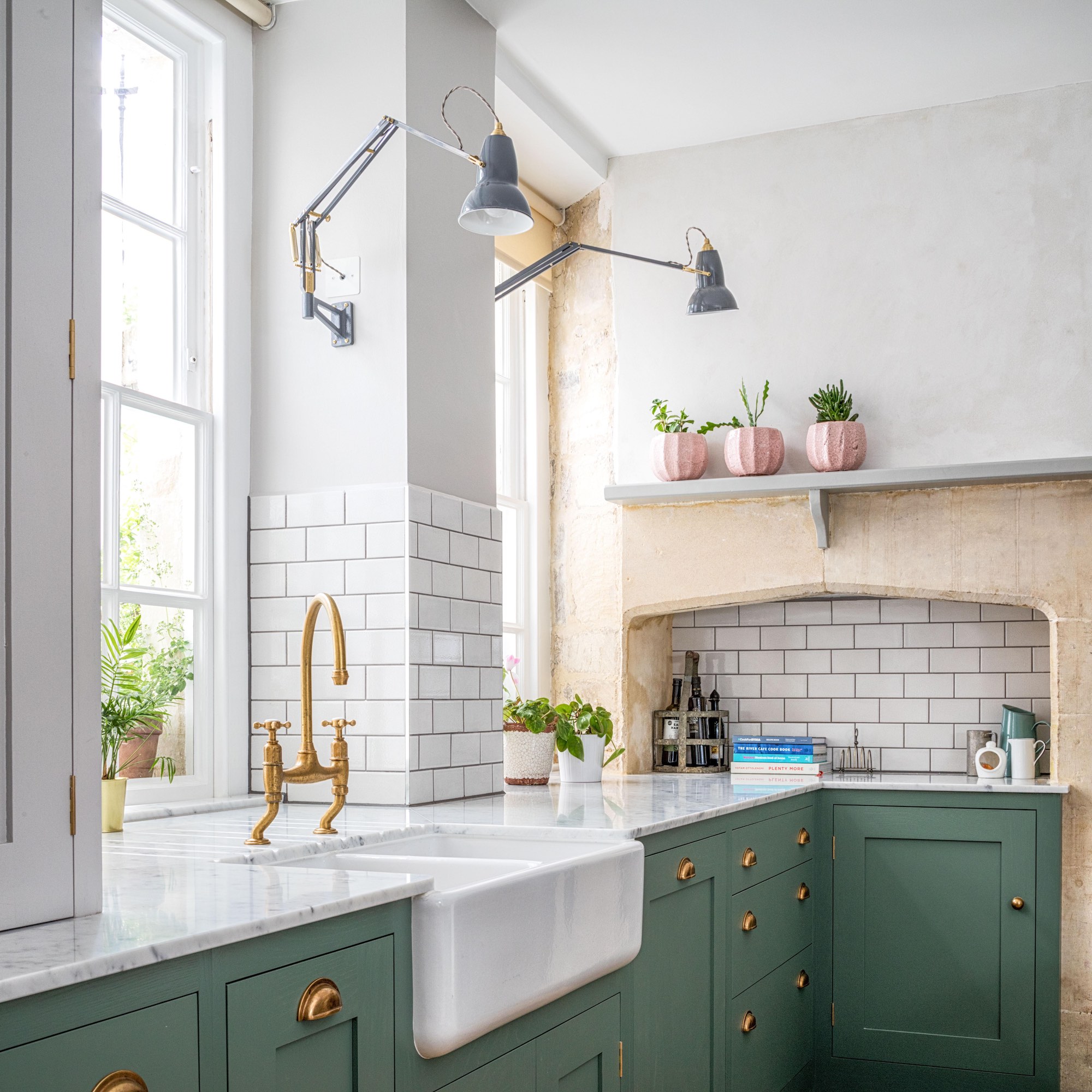
PROS Known for their classic, elegant appearance and crisp white finish, fireclay kitchen sinks have a glazed surface that’s smooth and non-porous, making it fairly easy to keep limescale build-up at bay.
Sign up to our newsletter for style inspiration, real homes, project and garden advice and shopping know-how
‘Fireclay produces an extremely hard and durable surface, and limescale should be straightforward to remove. We recommend Bar Keepers Friend, available on Amazon to remove most marks and stubborn dirt, but any proprietary limescale removal products can be used without damaging our sinks,’ says Nigel Palmer, head of communications marketing at House of Rohl.
CONS Fireclay sinks are heavier and can be more expensive than other options, although savvy shoppers can learn how to get a butlers sink for less. While the glaze is good at resisting hard water minerals, deposits can still accumulate over time, especially around the drain. Also, you cannot use acidic limescale removal products or anything abrasive on fireclay as they will damage the glaze.

As Head of Communications Marketing at House of Rohl, Nigel leads the brand's marketing initiatives across its luxury kitchen and bathroom collections. With a passion for design and a career spanning more than two decades in premium home interiors, Nigel has an in-depth knowledge of House of Rohl's product base, including its classic sinks by Shaws of Darwen.
3. Stainless steel
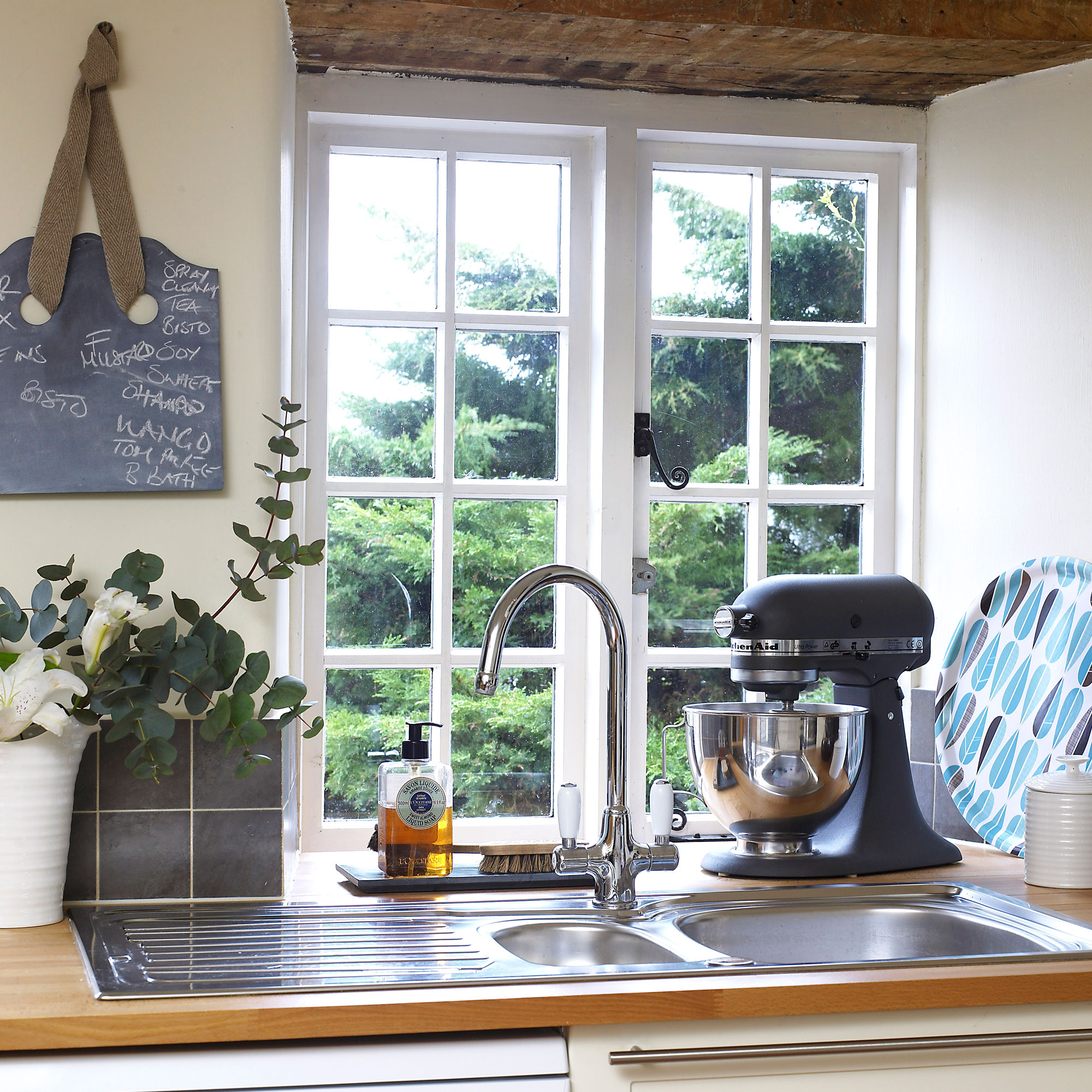
PROS Stainless steel is the most popular choice for those seeking a low-fuss, easy clean sink and this can apply to the limescale issues associated with hard water, too. Stainless steel is tough, smooth and resistant to corrosion and rust. Plus, it’s generally budget-friendly and comes in every imaginable size, shape and style. Stainless steel isn’t immune to limescale, no sink is, but its surface is incredibly easy to clean.
CONS If not wiped down regularly, hard water can still leave grey spots and stains on the surface. Opting for a satin or brushed stainless steel finish will absolutely help – polished steel can be a nightmare when hard water is left to dry on, and the limescale marks can be seriously noticeable.
‘To maintain a clean, spot-free finish, we recommend using a dedicated stainless steel sink cleaner once or twice a week which takes just a couple of minutes,’ says Gabby Gardner, from Franke. ‘This cleans and adds a water repellent coating on the surface which makes the sink easier to clean and shiny looking.’
4. Cast iron
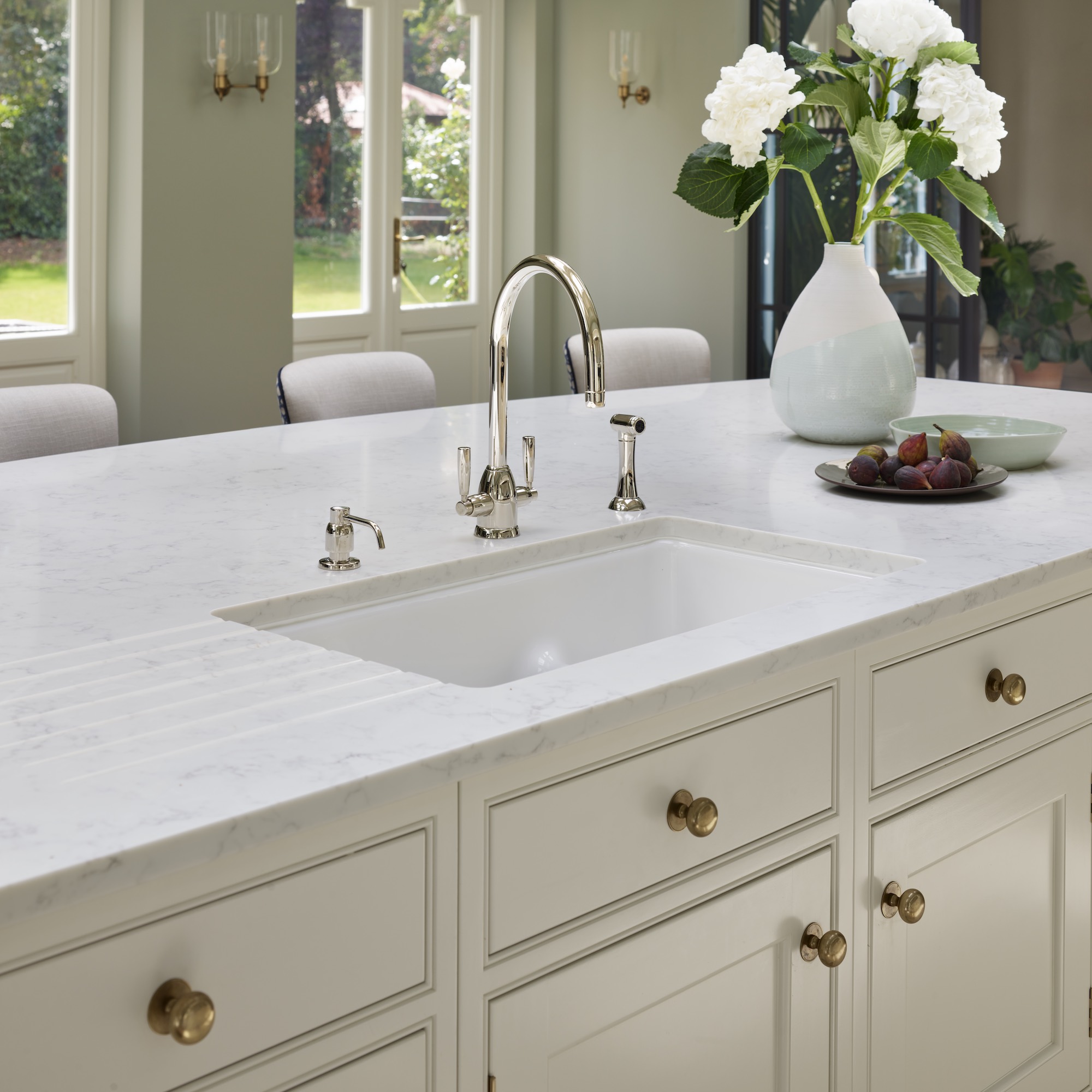
PROS If you’ve ever had a cast iron bath with enamelled interior, you’ll know just how strong, long-lasting and easy to wipe clean a cast iron kitchen sink can be. The enamel coating is glossy and smooth and can the cast iron core is highly insulative so your washing up water will stay hotter for longer.
CONS There is a chipping risk, which makes cast iron kitchen sinks incompatible with heavy objects, like cast iron pans! If the enamel does chip, the cast iron exposed will certainly rust. Enamelled cast iron is also prone to scratching, which will dull the surface, leaving it more susceptible to hard water stains and mineral deposits. Never use abrasive or acidic cleaners on a cast iron sink.
5. Quartz composite
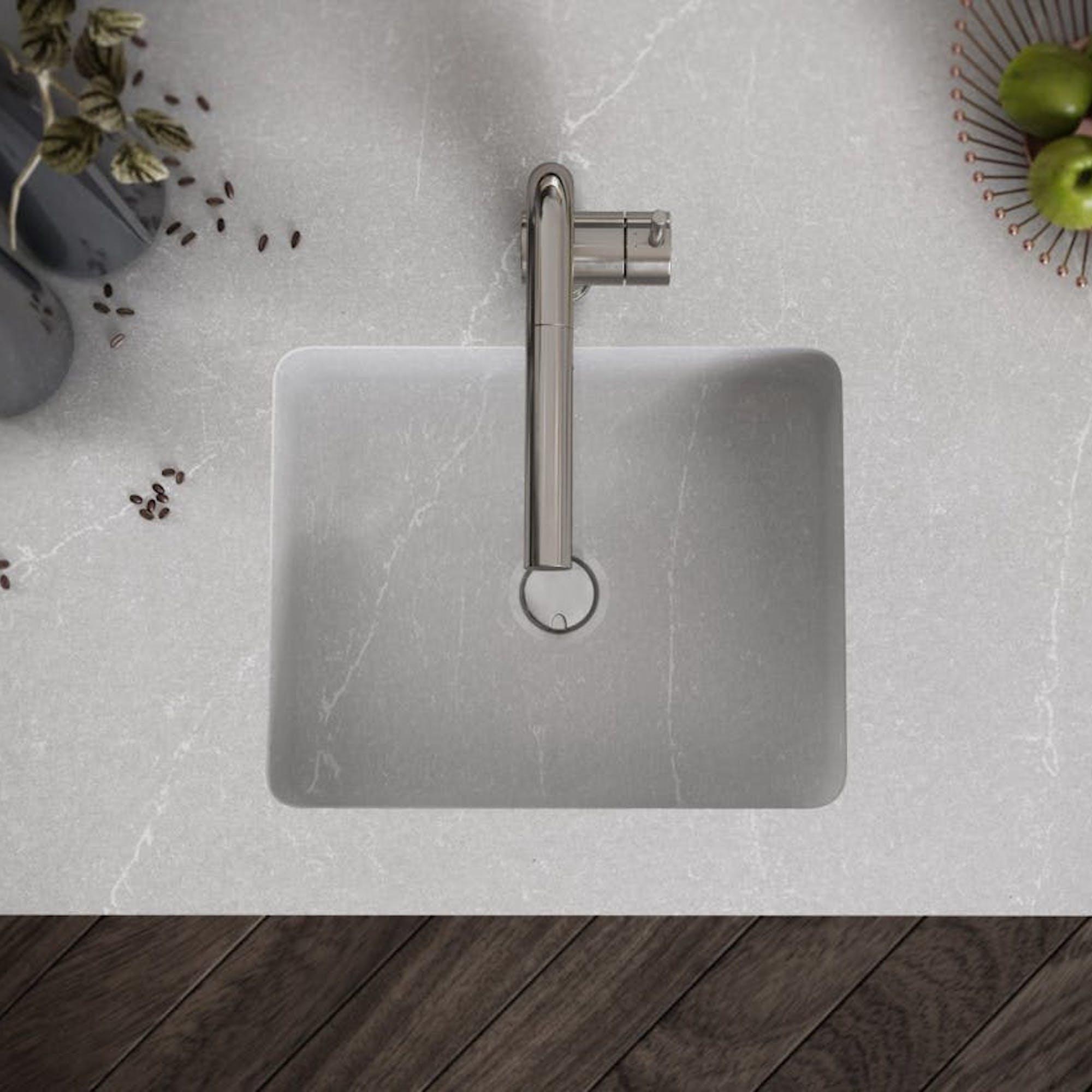
PROS Quartz composite sinks are similar to granite composite sink, except made from high ratios of stone – specifically, finely crushed quartz – and lower levels of resin. Many people choose quartz sinks fabricated in the same colour quartz as their worktops to achieve a high-end, seamlessly coordinated look. It is resistant to scratching, chipping, and staining, making it a good option for hard water areas.
CONS Like granite composite sinks, it is best to go for lighter colours if you are considering quartz. This will help to camouflage any minor hard water stains and reduce visibility of any limescale tide marks. To keep quartz kitchen sinks looking pristine, gentle limescale removers or vinegar solutions are recommended.
FAQs
How can I avoid hard water damage?
Drying your kitchen sink after every use is the best way to avoid the marks caused by limescale. ‘This helps prevent water droplets from evaporating and leaving unsightly marks, keeping your sink looking clean and spotless. This applies to all sink materials, including stainless steel, granite and ceramic,’ says Gabby Gardner, from Franke. ‘To avoid excess moisture, always remove wet cleaning cloths and containers from the sink after use.’ Keep a clean tea towel or microfibre cloth near the sink and dry as you go – and teach other family members to do the same. Tedious but effective.
One way to avoid worrying about drying your sink all the live-long day is to invest in a water softener system on your mains water supply or install a specialist limescale filter on the tap above the sink in question. This will also protect your kettle and other appliances from limescale damage and make your drinking water taste nicer.
Alternatively, you could spend a little more on your kitchen sink and look for models with hydrophobic coatings, which are designed for easy maintenance and durability. Applied during the manufacturing process, these high-end coatings make the surface more resistant to watermarks and stains by not allowing the water to sit on the surface for long periods.
‘In hard water areas, sinks with hydrophobic properties are an excellent choice, as they cause water to bead up and roll off the surface, minimising water stains and limescale deposits and reducing the need for constant maintenance,’ explains Gabby Gardner, from Franke, which has developed a patented hydrophobic coating called F-Inox Technology.
Different brands have their own names for the technology but when shopping for a kitchen sink with hydrophobic properties, check for terms like ‘nano-coating’, ‘easy-clean’, or ‘water-repellent’ in the descriptions.
What is the worst kitchen sink material for hard water areas?
If you are prepared to dry your sink after every use, most materials are fine. If not, they will all fall prey to limescale marks and stains eventually. However, there are a couple of kitchen sink materials we recommend avoiding if you live in a hard water area and have no intention of drying down your sink after ever use. The first would have to be kitchen sinks made from natural stone. Solid stone sinks like marble and limestone are highly susceptible to staining and etching from mineral deposits. It is very likely they will need to be resealed more frequently than in homes with a soft water supply.
And the second is unlacquered natural copper sinks, which can prove seriously challenging in hard water areas. Limescale can quickly build up and be very visible on copper surfaces, leaving ugly tidemarks and dulling polished copper finishes. Even if it has been sealed with a protective coating, the finish will wear off in time and abrasive cleaning is an absolute no-no, too. Avoid.
Ultimately, the best sink material for hard water areas depends on how much effort you’re prepared to put in, versus the look you are seeking. With our guide to the main options, you can now choose the material that will work best for you.

Linda Clayton is a professionally trained journalist, and has specialised in product design, interiors and fitness for more than two decades. Linda has written for a wide range of publications, from the Daily Telegraph and Guardian to Homes & Gardens and Livingetc. She has been freelancing for Ideal Home Magazine since 2008, covering design trends, home makeovers, product reviews and much more.